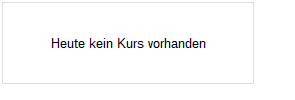
I. M. Skaugen SE : 3Q Result 2013
The I.M. Skaugen Group (IMSK) achieved a pre-tax result for YTD 3Q13 of USD16.8 mill, compared to a negative USD11.2 mill for YTD 3Q12. The EBITDA for the Norgas segment for YTD 3Q13 was USD9.9 mill, compared to USD20.5 mill for YTD 3Q12.
PERFORMANCE 3Q13
The performance of our core business, liquefied gas transportation (the Norgas segment) was YTD 3Q13 below the same period last year.
The business was affected by the fact that we have yet to see a recovery of exported volumes from the Gulf region to match the shortfall of Iranian exports of petrochemical products. The overall export of ethylene from the Gulf Region was up in 3Q13 and still below the volumes seen in 2012, before the Iran sanctions were implemented.
The shortfall in long haul ethylene export volumes from the Gulf region, which are mainly sold to Asia, was mostly made up by Japanese and Korean suppliers replacing the volumes from the affected Gulf region suppliers. This led to short-haul intra-Asia trade replacing long-haul trade from the Gulf region. The result was less ton-miles for the global ethylene fleet and continued commercial idle time affecting the spot rates negatively.
During the coming years there is however new ethylene cracker capacity coming on stream in the GCC part of the Gulf region (Bahrain, Kuwait, Oman, Qatar, Saudi Arabia and United Arab Emirates). Historically we have seen a trend of increased exports during the immediate years of new plants being commissioned and before up-stream and down-stream plants are more fully aligned. The start of dialogue between Iran and the USA is also encouraging even though it could be a long process before sanctions are lifted. We also see that the Korean and Japanese suppliers have marginal profitability at current product price levels due to the high cost of naphtha as feedstock for their crackers. This lack of profitability indicates that there will not be much new capacity added in this region to support the nearby markets in the future. The growth in demand will thus probably be supplied from long haul sources going forward and this could absorb a part of the underutilized fleet of ethylene carriers.
The long haul butadiene trade continued to be subdued during 3Q13. Even though the underlying global demand for butadiene (used to a great extent in tire manufacturing) has shown a steady increase in line with a growing fleet of vehicles, the incentives for long haul trade has not been there in 2013. The supply of butadiene from Europe, a traditional export market has been short due to planned and un-planned plant outages. The increased export from Japan and Korea of ethylene to cover the shortfall of Gulf region exports has also led to increased supply of butadiene (a naphtha based ethylene cracker will also produce butadiene as a by-product). In addition, new butadiene capacity has also been coming on-stream in Asia and especially in China. These together have kept local prices below what is needed to stimulate the traditional long haul trade from Europe. However, towards the end of 3Q13 we have noted that the arbitrage margins for butadiene have increased to levels which could support exports from Europe to Asia.
Our contract portfolio of key customers, mainly based in the GCC region, continues to provide a good base for our core business. These customers continue to occupy more than 60% of our fleet capacity as a rolling 12 months average although the percentages were higher during most of 3Q12. This helped us maintain a more reasonable average time charter equivalent earning levels (TCE) for the fleet in an otherwise slightly weaker spot market. The average TCE earnings for our fleet also continue to be better than the average time charter (TC) rates in the market.
The underlying demands for the services we provide and the products we transport are closely linked to the production and consumption of all plastic products used and consumed in most parts of our daily life. A positive development of the global economy will therefore lead to a growth in ethylene consumption, which historically has been higher than GDP growth and with a factor of 1-1.5.
The signs are that the world economy is on an improving trend and we will see increase in growth going forward. We also note that the European industry is now showing signs of recovery and we have seen an increase in ethylene imports into Europe; mainly from the Gulf region. The Chemical tanker market, which historically has been ahead of the petrochemical market, has also shown signs of recovery during the year.
The GCC region remains the lowest cost producer of petrochemicals due to it cost base for feed-stock and will remain the key hub for long haul exports of petrochemicals.
On the back of the US shale-gas and shale-oil boom taking place, the US is set to become the second large export hub for low cost ethylene when the planned expansion of ethylene crackers becomes operational in 2015-2017. Shale-gas and oil production generates huge surpluses of ethane that now is available as a very low cost feed-stock for the US petrochemical industry.
A secondary effect of the increased use of ethane as feed-stock in the petrochemical industry will be that it creates even more of a structural shortage of butadiene and propylene. A conventional naphtha based ethylene cracker produces significant amounts of these products while an ethane based produces very little or none. It is therefore likely that the US can become an importer of these products from overseas sources.
Shale gas contains a high proportion of NGL (natural gas liquids; ethane, propane and butane). The ethane is currently used as feed-stock for the local petrochemical industry while much of huge quantities of LPG (propane and butane) will be exported overseas.
This growth in shale gas production will continue since it provides significant benefits to the US industry; providing a low cost source of energy and electricity as well as a feed stock for the chemical industry. If we compare the US gas prices with the European import prices between 2008 and 2012, the accumulated cost advantage amounts to more than USD600 bill for the US.
The growth in shale gas production will also help fuel a further growth in LPG exports from the US since the LPG is a by-product of shale gas production that needs to be extracted. It will also most likely lead to more overseas export of the other surplus NGL, ethane, as feed-stock for petrochemical plants.
During 3Q13 there have been significant additions to the order book for the fleet of long haul gas carriers for LPG and with capability to carry also ethylene (defined as vessels between 8,000 and 23,000 cbm that can transport ethylene fully refrigerated at minus 104C). The current order book of 28 vessels equates to 44% growth (measured in cbm) in the sailing long haul ethylene fleet's capacity. We interpret this more as investments in LPG tonnage, but with ethylene capability added as an option for increased cargo flexibility. We note that many of these larger vessel that are now being built, are of sizes that normally are not involved in the long haul ethylene trade and are more commonly used in regional LPG trade as well as transport of ammonia and VCM.
The LPG shipping market is currently experiencing a tremendous upswing and the high growth expectations in ton-miles seems well founded on the growing export of low cost LPG surplus generated in the US -as a direct result of on the on-going shale-gas boom. The ship borne exports are not limited to conventional LPG but also ethane and LPG with high ethane content, both which will require vessels with ethylene capabilities.
It is therefore more appropriate to look at the whole semi-ref fleet, including vessels that only can carry LPG, to get the fleet growth in perspective.
The conventional semi-ref fleet (8,000 to 23,000 cbm - without ethylene capability) has an order book of only 10 vessels versus a sailing fleet of 69 and with 8 vessels passing the age of 30 years before 2016. This equates to a growth of only 9% in terms of cbm capacity. Combining these two vessel types (ethylene and semi-ref), the growth in cbm will be 25% over the coming three years and the compounded net annual growth rate in fleet capacity (cbm) for the combined fleet will be 7% per year going forward (2013-2016).
The underlying fundamentals for our small scale LNG concept remain sound and valid. Gas is, and will remain, one of the key fuels of the future - both for cost and environmental reasons. We have a unique business proposition with a sailing fleet of six LNG capable vessels (four 10,000cbm vessel and two 12,000cbm vessels) that are currently transporting petrochemicals. These vessels can be made available for LNG trade within short notice for either long- or short term employment (and can easily revert back in to petrochemical trade if needed).
The upcoming ECA (Emission Control Area) zone in North West Europe has gained a lot of attention since it provides a large potential market for LNG as a marine fuel. The building of infrastructure, like bunkering terminals for LNG, has so far been lagging behind. As we get closer to 2015 when the new emission regulations will come into force, we expect many of the current projects for infrastructure to materialize in order to serve this potentially large LNG market. We also note more activities taking place in Asia and in particular in China where there is already LNG bunkering stations operating, serving more than a hundred domestic vessels running on LNG.
Our strategy remains fully focussed on our core business, gas transportation, and our organisation is aligned accordingly. We are also continuing our focus on cost reduction programs. Objectives set out in 2010; reducing shore-based staff with about 50% and centralising the operational and commercial activities of our core business to Singapore, will be nearing completion in 2013.
To visualize the values in our business and to improve our balance sheet remain the key focal areas for the company. We have made continuous improvements during the year; restructured joint ventures, sold some of the older and smaller vessels and used excess liquidity to reduce our debts further. In addition our SPT businesses continue to deliver more positive results outside of the US Gulf ship to ship transfer business.
In 3Q13, we sold one of our oldest and smallest ships, Norgas Carine, built in 1989. The transaction generated a small gain and improved our liquidity further.
We continued to use excess liquidity to reduce our debt and during 3Q13 we have bought back bonds in the market with a nominal value of NOK31 mill.
Our consolidated mortgage debt was USD73 mill by the end of 3Q13.
We will have no refinancing needs until 2015, we have no material capital commitments and we remain fully financed.
NON-STRATEGIC JOINT VENTURES AND ASSOCIATES
These businesses which include SPT and our China activities delivered a positive EBIT of USD4.1 mill for YTD 3Q13 which is an improvement compared to a negative EBIT of USD2.5 mill for the same period last year.
The manufacturing company Shenghui Gas and Chemical Systems (SGCS), of which we own 50%, continues to develop well. The YTD 3Q13 EBIT and NPAT are 14% and 32% higher respectively than the same period last year, while gross revenues were 4% lower. With SGCS' continued performance ahead of last year, we remain confident that the process of visualizing the value of this investment will be successful and we will be able sell our shares in the company at a gain compared to book value.
COMPANY OUTLOOK
Many of the indicators, in terms of the development of the world economy and industrial output, points towards an underlying growth in demand for the logistics services we provide. We expect the growth in export of petrochemicals from the GCC region to continue to improve. This together with the current surge of LPG exports from the US followed by growth in petrochemicals exports from the US will be needed to absorb the excess capacity of vessels within the gas transportation business.
Oslo, 24th October 2013
I.M. Skaugen SE
Board of Directors
I.M. Skaugen SE
If you have any questions, please contact:
Bente Flø, Chief Financial Officer, on telephone +47 23 12 03 30/+47 91 64 56 08 or by e-mail: bente.flo@skaugen.com. This press release is also available on the Internet at our website: www.skaugen.com.
I.M. Skaugen SE is a Marine Transportation Service Company, with a focus on Innovative Maritime Solutions. Our core activity is the seaborne transport and logistics of liquefied gases, such as petrochemical gases, LPG and now also LNG.
The I.M. Skaugen Group of companies (IMS) currently operates a fleet of 30 vessels worldwide of which 17 are gas carriers within the core business area. We are also capable to provide on- and off-shore LNG terminal management as well as ship to ship transfer services of LNG/LPG and on a global basis. We have in-house capabilities for the development and design of specialized high quality gas carriers for our niche markets and we recruit, train and employ our own team of seafarers.
IMS employs approximately 2,000 people globally out of which 700 are within our core gas activity, and with 23 nationalities represented. We manage and operate our activities and service our clients from our offices in Singapore, Oslo, Shanghai, St. Petersburg, Houston, Sunderland and Bahrain.
The owner of this announcement warrants that:
(i) the releases contained herein are protected by copyright and other applicable laws; and
(ii) they are solely responsible for the content, accuracy and originality of the
information contained therein.
Source: I. M. Skaugen SE via Thomson Reuters ONE
Mehr Nachrichten zur I.M. Skaugen Aktie kostenlos abonnieren
(Mit der Bestellung akzeptierst du die Datenschutzhinweise)

Hinweis: ARIVA.DE veröffentlicht in dieser Rubrik Analysen, Kolumnen und Nachrichten aus verschiedenen Quellen. Die ARIVA.DE AG ist nicht verantwortlich für Inhalte, die erkennbar von Dritten in den „News“-Bereich dieser Webseite eingestellt worden sind, und macht sich diese nicht zu Eigen. Diese Inhalte sind insbesondere durch eine entsprechende „von“-Kennzeichnung unterhalb der Artikelüberschrift und/oder durch den Link „Um den vollständigen Artikel zu lesen, klicken Sie bitte hier.“ erkennbar; verantwortlich für diese Inhalte ist allein der genannte Dritte.




